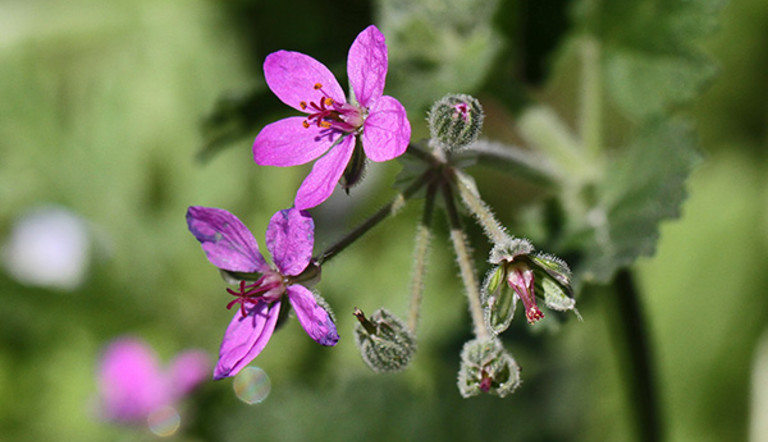
Pest Profile: Stork’s Bill
Stork’s bill is a winter annual weed that was introduced from Europe in the 1700s, and can now be found throughout Canada. This member of the geranium family often grows in low, dense stands and can cause significant yield reductions, with seeds that can be difficult to remove from small seeded crops. The seeds are capable of surviving for 1-3 years in the soil. Stork’s bill grows aggressively, is drought tolerant, can be a host for plant diseases and can thrive in a variety of soil types.
Pest Profile
October 11, 2021
6min read

TYPE
- Broadleaf
- Winter Annual
IDENTIFICATION
Stork’s bill stalks are erect and grow to about 40 cm (16 in.) tall. The leaves resemble carrot leaves, and the pink or purplish flowers are about 1 cm (1/2 in.) in size and grow in clusters of 2-12 flowers on long flower stalks. At the maturity stage, the seed splits into five segments, each with a spiraled tail.
CONTROL TIPS
- Scout fields early, as stork’s bill can grow past the recommended herbicide application stages.
- Check low spots for patches, and take at least 20 weed counts across the field.
- Control by tilling the previous fall and then treat with an herbicide as early in the season as possible.
- Clean all equipment thoroughly to avoid unintentionally spreading seed.
REGISTERED HERBICIDES
Please read each label to determine which herbicide is appropriate for the crop affected.
REFERENCES AND ADDITIONAL READING
“Stork’s Bill (Erodium cicutarium).” Alberta Invasive Plants Council. https://bit.ly/2qxANAT
“Stork’s Bill.” Province of Manitoba. https://bit.ly/2OsX643